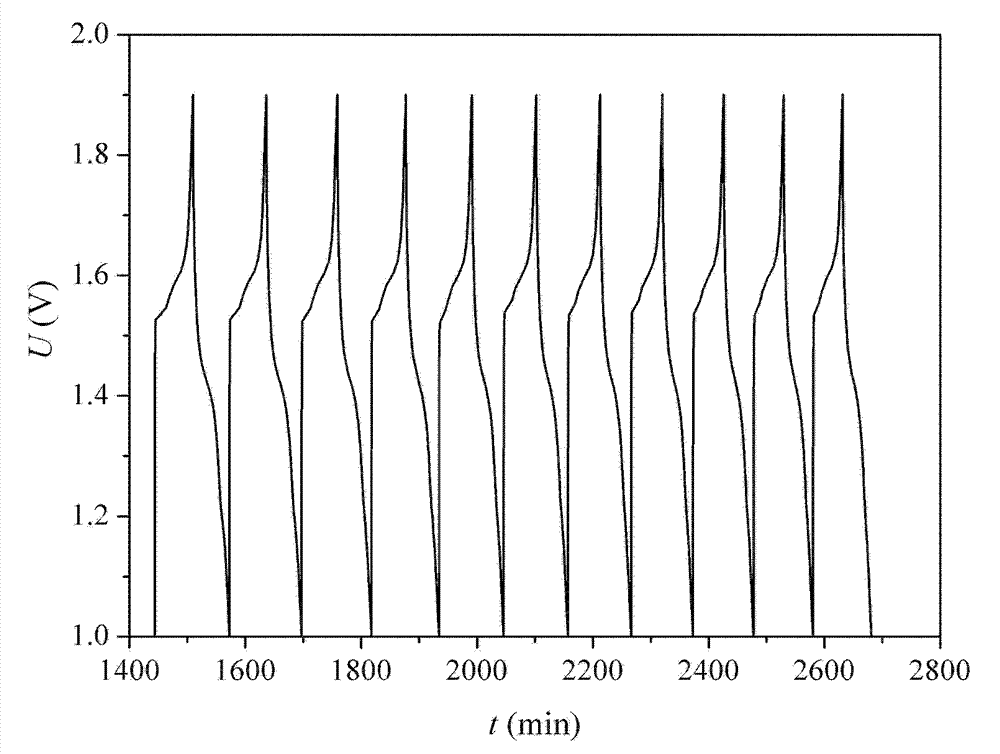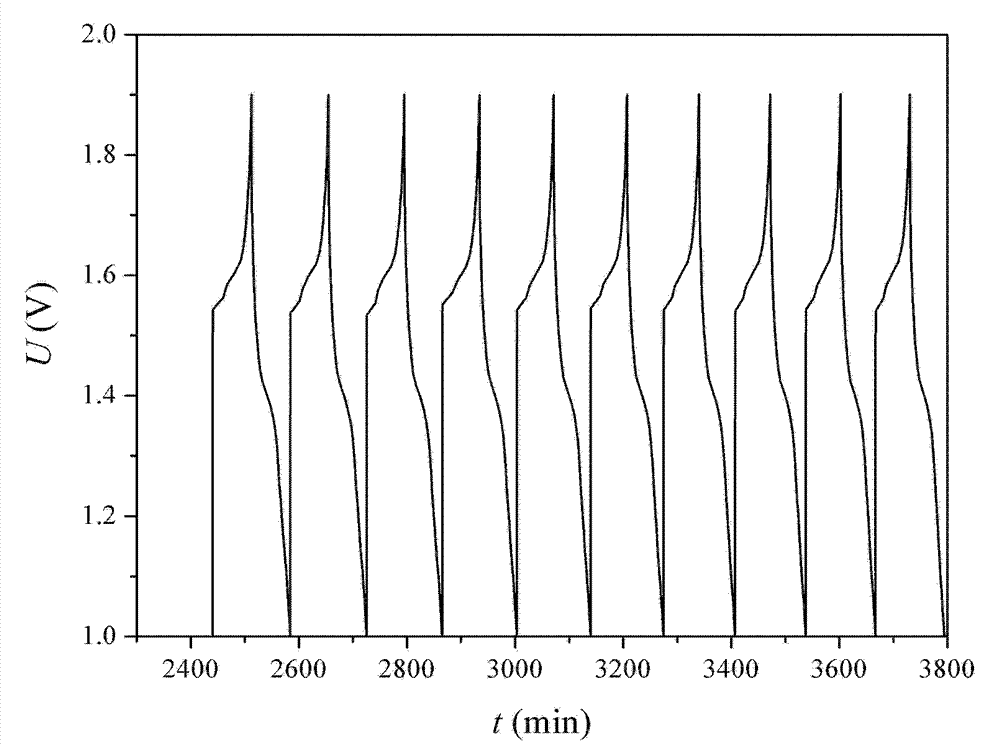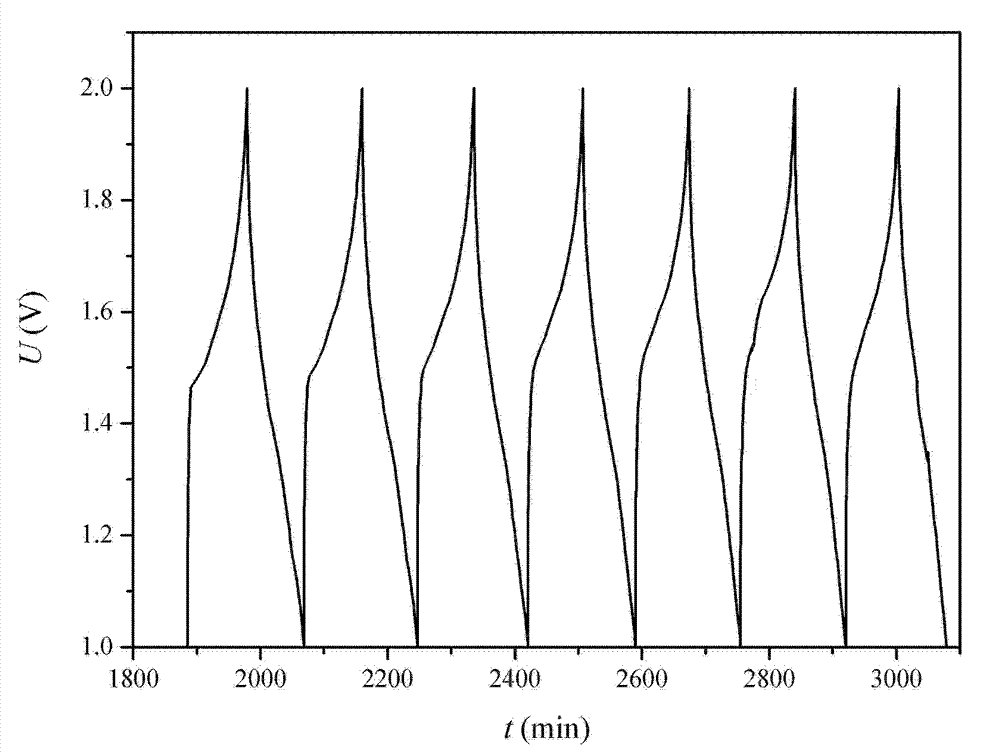Polymer rechargeable zinc-ion battery
A zinc-ion battery and polymer technology, applied in battery electrodes, alkaline storage batteries, circuits, etc., can solve problems such as high sealing requirements, battery performance degradation, liquid leakage and oxidation crystallization, and achieve strong sealing effect and not easy to lose Water, the effect of long storage time
- Summary
- Abstract
- Description
- Claims
- Application Information
AI Technical Summary
Problems solved by technology
Method used
Image
Examples
Embodiment 1
[0018] Stir and mix manganese dioxide, conductive agent acetylene black and binder PVDF (polydenetetrafluoroethylene) according to the mass ratio of 7:2:1, then coat it on stainless steel foil, cut it into a certain size, and dry it in vacuum. Obtain electrode sheet 1. The electrode sheet 1 is used as the positive electrode, and the zinc foil with a thickness of 0.1mm is used as the negative electrode. Zinc 25%, the balance is water, assembled into a rechargeable zinc-ion battery, denoted as Cell 1. After testing, Cell 1 is at 100 mA g -1 The charge-discharge curve under constant current is shown in figure 1 .
Embodiment 2
[0020] The electrode sheet 1 prepared in Example 1 is used as the positive electrode, and the 0.1 mm thick zinc foil is used as the negative electrode. The specific mass ratio of the electrolyte is: ethyl cellulose 5%, polyvinyl alcohol 0.05%, and cationic polypropylene with a molecular weight of 5,000 Amide 0.3%, zinc nitrate 40%, and the balance water, assembled into a rechargeable zinc-ion battery, denoted as Cell 2. After testing, Cell 2 is at 100 mA g -1 The charge-discharge curve under constant current is shown in figure 2 .
Embodiment 3
[0022] Stir and mix zinc powder, conductive agent acetylene black, and binder PVDF at a mass ratio of 8:1:1, coat it on stainless steel foil, cut it into a certain size, and dry it in a vacuum to obtain electrode sheet 2. The electrode sheet 1 prepared in Example 1 is used as the positive electrode, and the electrode sheet 2 is used as the negative electrode. The specific weight ratio of the electrolyte is: 3% methyl cellulose, 0.03% polyvinyl alcohol, and nonionic polyacrylamide with a molecular weight of 30,000 0.2%, zinc sulfate 30%, and water as the balance, assembled into a rechargeable zinc-ion battery, denoted as Cell 3. After testing, Cell 3 is at 100 mA g -1 The charge-discharge curve under constant current is shown in image 3 .
PUM
 Login to View More
Login to View More Abstract
Description
Claims
Application Information
 Login to View More
Login to View More - R&D
- Intellectual Property
- Life Sciences
- Materials
- Tech Scout
- Unparalleled Data Quality
- Higher Quality Content
- 60% Fewer Hallucinations
Browse by: Latest US Patents, China's latest patents, Technical Efficacy Thesaurus, Application Domain, Technology Topic, Popular Technical Reports.
© 2025 PatSnap. All rights reserved.Legal|Privacy policy|Modern Slavery Act Transparency Statement|Sitemap|About US| Contact US: help@patsnap.com



